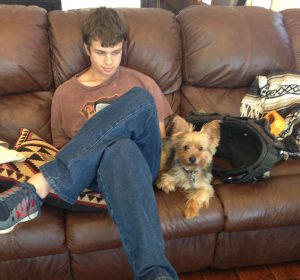Animal Shelter Volunteer Work for Kids and Teens with Autism: Master Social and Job Skills
Volunteering at an animal shelter is a great way for tweens, teens and young adults on the autism spectrum to practice and improve social and job skills. They also learn responsibility and a respect for animals. As visitors come into animal shelters to look at animals available for adoption, it’s the perfect place for teens to improve face-to-face communication. The experience they gain volunteering at an animal shelter molds them into more effective volunteers and prepares them for the workforce.
Volunteering at an animal shelter is a fantastic opportunity, especially for teens with Aspergers. It has been widely discussed that children, teens, and adults with Aspergers form strong bonds with pets, and can greatly benefit from animal companionship.
Their time spent volunteering will produce better outcomes (adoptions) if they have good communication skills. Here are some top social skills from my book to ensure teens maximize the chance of an animal getting adopted, and master important social and job skills:
1. Smile and Say Hello:
When you see another person, whether a co-volunteer, staff member or visitor, smile and say “Hello”. Your smile will set the tone for positive future interactions and brighten the person’s day. It may even lead to an animal getting adopted or a financial donation. It all starts with a smile!
I used to volunteer at an animal shelter walking dogs. Often I would be in the back of the shelter bringing a dog in or taking one out. There would be people in the back of the animal shelter looking for animals to possibly adopt. I would smile and say “Hello”. I’d ask if they had questions about any of the dogs I walked. Often they would. After telling them about the animals, I’d suggest they spend time with any animal they were interested in. About 70% of the time they’d end up adopting an animal just because I engaged them and was able to provide helpful information. You can do the same thing!
2. Turn Off the Electronics:
When you are volunteering, keep your phone at home, or turned off, on silent or vibrate mode, and out of sight. This is part of being a professional volunteer and lays the foundation for good work habits.
3. Say Please and Thank You:
Kirt Manecke is an award winning author and sales, marketing, and fundraising specialist who’s an expert at delivering amazing customer service that makes people smile. Kirt is passionate about helping teens and adults succeed. He wants to help people with autism and other special needs get and keep a job and live fulfilling lives, which is why he is thrilled to be working with Aspergers101. He hopes his information will make it easier for parents of kids and adults with special needs to make friends and get that job.



 If you have a child with Aspergers who interacts well with animals, there’s no need to be surprised. People with Aspergers tend to bond more with animals than they do with people. In fact, many neurotypicals would see Aspies as animal whisperers due to how well they bond with animals.
If you have a child with Aspergers who interacts well with animals, there’s no need to be surprised. People with Aspergers tend to bond more with animals than they do with people. In fact, many neurotypicals would see Aspies as animal whisperers due to how well they bond with animals.
